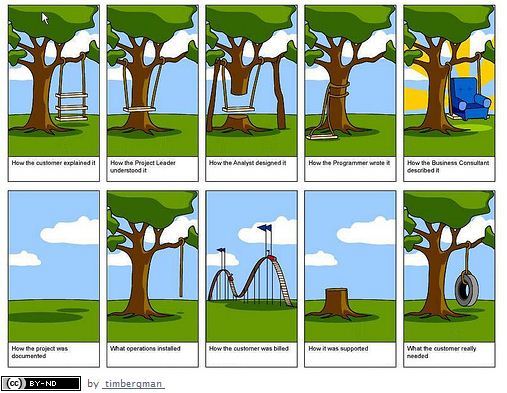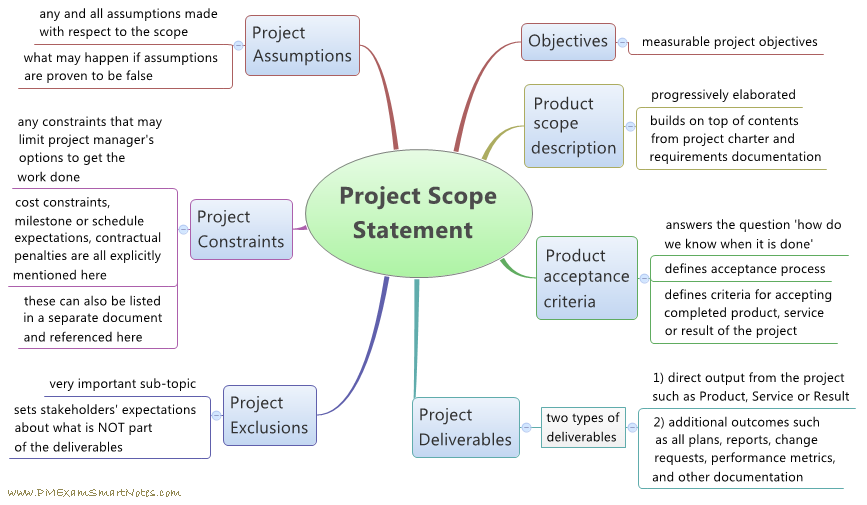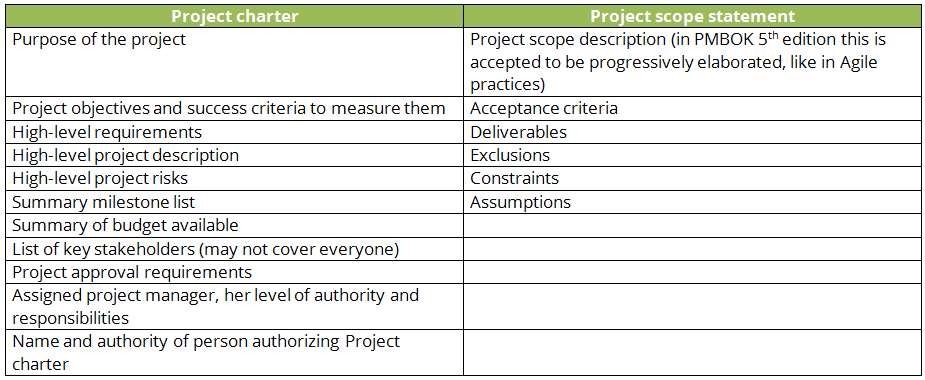 Now that we have collected requirements, let us see how to define scope…. from… requirements.
Now that we have collected requirements, let us see how to define scope…. from… requirements.
Yes! Requirements are the first input to this process, which is the output of Collect Requirements process.
By defining scope we are basically developing a detailed description of the project and product that it creates.
You can download a sample project scope statement template at the end of this post.
Exam pointer: The easiest way to remember sequence of process (exam requires you to remember the sequence) is to understand how they are related. To understand how does output of one process become input of the other.
For instance,
- You plan strategies to collect requirements and manage scope,
- then talk to stakeholders and collect requirements,
- using them define the scope of the project,
- then break down the scope into tasks so you can assign them to people,
- further, you verify their work to see if scope is met,
- and ensure that people do not work on something out of scope
With this you have logically deduce all processes of Project Scope Management Knowledge Area!

To define scope we would need the plan that explains how to manage scope, and the Project charter that has the high level information – such as project description, high-level business needs, applicable standards, and acceptance criteria.
How do we define scope?
You already know the power and usefulness of expert judgment. It is about utilizing available expertise – either of someone internal in the organization or an expert from outside – to identify the project scope.
Analysis is done in order to understand the scope better. Analysis can employ several mechanisms such as –
- product breakdown – study components of product
- system analysis – study interacting entities to understand system better
- value engineering – understand value defined as ratio of function to cost, as a pre-manufacturing activity
- value analysis – analyzing value of existing product to reduce unnecessary costs
Alternatives are generated to help us figure out different ways of achieving the same work, at the benefit of reduced cost or labor.
For instance, laying synthetic anti-slip jogging track is a precision work. Kathy, the project manager, could either decide to get some experts come in and lay it out. Or she could look at training her own team and get the work done. She can decide which alternative works based from cost, effort, and schedule perspective.
Get key stakeholders together and brainstorm to make sure that team is producing the deliverable that really meets customer’s cross-functional needs.
This can be done by writing down quantifiable goals while conducting these sessions.Then you can use them during QA cycle to validate deliverables against the requirements.
Prototype development in Software projects is one such example.
Scope document
This document describes in detail the project’s deliverables and the work required to create these deliverables. This is the master document as far as assessment of project work is concerned, and used throughout the life of the project.
We have seen that it builds on the project charter and requirements documents. Here is a look at the contents of project scope statement.
 Figure 2: Contents of project scope document
Figure 2: Contents of project scope document
It appears at times that project charter and scope statement contain similar information. The distinction between the two is in the fact that project charter is a high-level document and scope statement contains very detailed information, albeit on some of the common topics such as project description and so on.
A clearer distinction between topics covered in Project Charter and Project Scope Document

Download a sample Project Scope Statement Template here: MSDoc version or PDF version .
During this project management activity few other project documents get updated such as –
- stakeholder register – while defining scope you may discover additional stakeholders.
- requirements documentation – requirements are progressively elaborated. When you look at project charter and requirements and define scope, you may discover some more details and/or missing requirements.
- requirements traceability matrix
- scope management plan – remember that any changes to the plans are done using change controls. More details in Control Scope process .
Defining project Scope is an important and critical project management activity of project management. If not done properly this may mean the difference between project success and failure. I have been guilty of not doing a good job at this at the beginning of my career as project manager.
One of which is not identifying additional stakeholders and thus missing out on their inputs during scoping phase.
What are some of the lessons you have learned during project scoping exercise?
Now that we’ve understood how to define scope from project requirements, let’s move to the next logical step – creating Work Breakdown Structure by breaking down the scope into logical, manageable units of work.
[SneakyAffiliate sneakyaffiliateurl=”https%3A//www.pmexamsmartnotes.com/pmprecast-myposts” sneakyaffiliatecookiexpdays=”1″ sneakyaffiliatesplash=”Are%20you%20sure%20you%20want%20to%20leave%20before%20you%20checkout%20special%20PM%20PrepCast%20sale%20by%20Cornelius%3F”] [/SneakyAffiliate]



